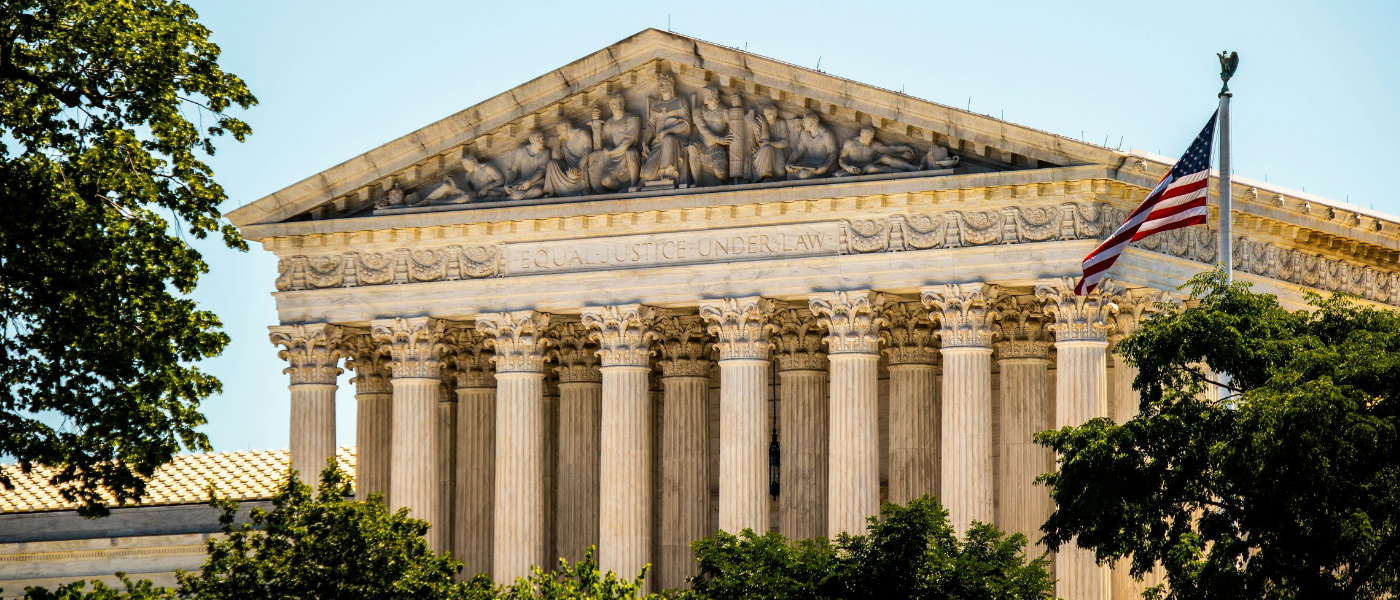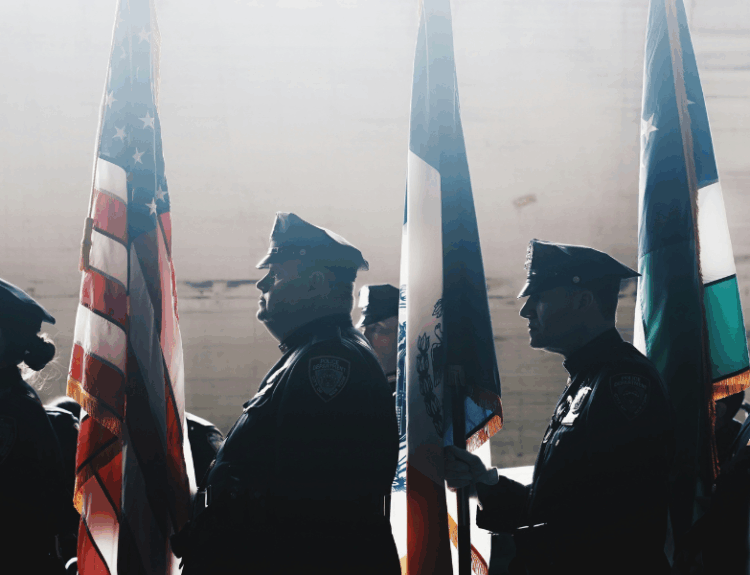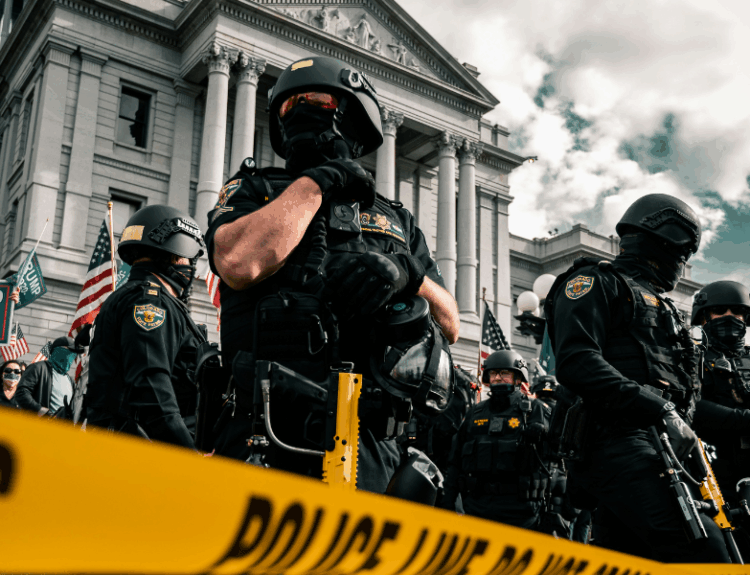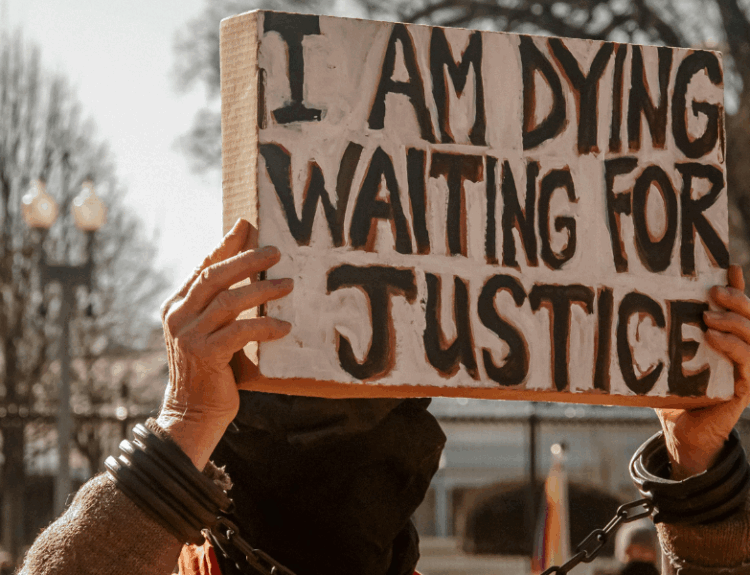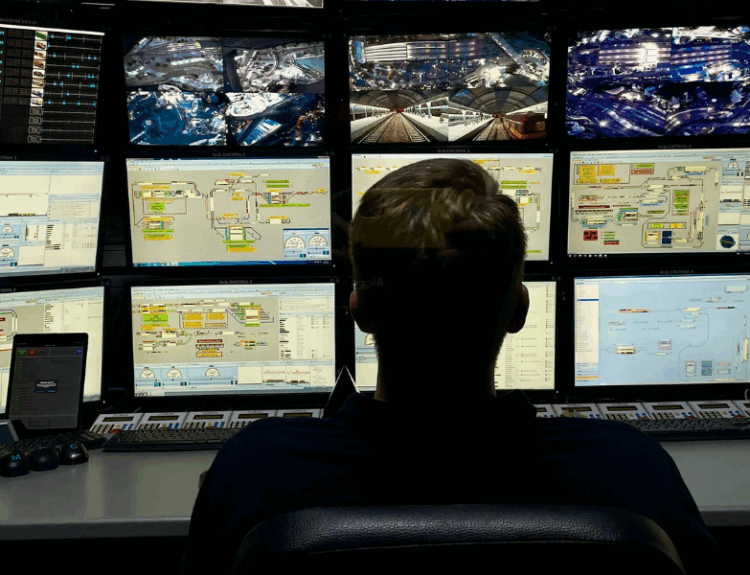Understanding the criminal justice system before you start your degree and choose your career path.
A criminal justice system refers to the way in which society responds to crime. It refers to the laws, policies, and institutions that exist for the purpose of responding to crimes. As part of the investigation, there are several steps that must be taken, including determining whether or not a crime has been committed, conducting an investigation, and establishing probable cause. The system involves more than identifying crimes and dispensing judgments; it also includes effective communication and rehabilitative efforts.
Let’s discuss in detail how the criminal justice system in the U.S works and why it is so important.
What is the Purpose of the Criminal Justice System?
The criminal justice system in the U.S. has numerous roles in society, but one of them is to ensure that the interest of the people is safeguarded and ensure the rule of law is upheld. The prevention and punishment of criminal behavior is the main task of this agency, and it is essential to the stability and safety of a community. It also has the responsibility of rehabilitating criminals and reintegrating them into the society once they have served their sentence.
The criminal justice system works towards attaining these objectives by safeguarding the citizens, offering just legal processes, and offering a safer environment. Students who plan to pursue careers in criminal justice must have a basic knowledge of the criminal justice system because it defines the basis of their professional life.
History of the Criminal Justice System in America
The criminal justice system in the United States is a multi-layered system that includes federal, state, and local agencies and a complex court system. It has a long history that has been developing since the first traces of the English legal traditions. During early colonial America, English law was merged with the biblical law and cultural practices, resulting in a disorganized legal system.
During the initial years of law enforcement, it was normal to have individual citizens who were tasked with the responsibility of arresting criminals. The perception of organized law enforcement changed in the 19th century as formal police forces were established, but these agencies were frequently marred by corruption and the lack of trust by the people.
During the 20th century, major reforms were enacted to deal with problems like police corruption and the challenges of Prohibition, like the Wickersham Commission (1929–1931). Moreover, the Civil Rights movement had a great impact on the criminal justice environment, as it focused on due process and individual rights when racial profiling was very common. In the late 20th century, the reinvigoration of public order was achieved, especially in the context of the so-called war on drugs. The War on Drugs, officially declared by President Nixon in June 1971, ushered in stricter drug enforcement, mandatory minimums, and expanded SWAT operations.
Despite progress in the criminal justice system, over the past few years, it continues to face the problem of mass incarceration and racial disparities. The development of U.S. criminal justice has been a direct reaction to the changes in the whole society, and the discussion of justice, safety, and individual rights has been going on since the very beginning.
Criminal Justice System Definitions
In criminology terms, the criminal justice system refers to a government-run system of arresting, prosecuting, defending, sentencing, and punishing those who are accused or convicted of crimes. Typically, the system consists of three main components:
- Law enforcement (police): Detects and arrests criminals.
- Judiciary (courts): responsible for fair trials, prosecutions, and sentencing.
- Rehabilitation (prisons, probation): assists offenders in reintegrating into society after being imprisoned.
It is for criminal psychologists to study how these systems work, how they function fairly and efficiently, and how they impact society and individuals. We will discuss these parts in more detail later on in the blog.
Key Criminal Justice Terms:
- Reform: The process of making changes to laws or systems to improve them.
- Act: A formal written law passed by a legislative body.
- Incarceration: Confinement of individuals in jail or prison as punishment.
- Parole: Conditional release of a prisoner before the completion of their sentence.
- Rehabilitation: Programs and efforts aimed at helping offenders reintegrate into society.
- Prosecutor: The lawyer representing the government in criminal cases.
- Conviction: A formal declaration that someone is guilty of a crime.
- Search and Seizure: The process by which police examine property and take evidence, often needing a warrant.
- Ethnicity: Social group with shared cultural, national, or ancestral traits
- Recidivism: The tendency of a convicted criminal to reoffend
5 Goals of the Criminal Justice System
A number of theories exist regarding the purposes of U.S. criminal law, but there are five primary objectives:
-
Retribution
In criminal justice systems in the United States, retribution has historically been the primary goal of prosecution and sentencing. As a general overview of retribution, a criminal is prosecuted and punished if convicted of the crimes they committed. As a result, prisons are commonly referred to as “penal systems” in the US.
-
Deterrence
The U.S criminal justice system also strives to deter future crimes. It is important to note that deterrence works on two different fronts. Firstly, the criminal trial, conviction, and sentencing process under criminal law is intended to deter a particular defendant from future criminal activity. Secondly, the system serves as a deterrent against other individuals from committing crimes.
-
Rehabilitation
A rehabilitation program is a strategy designed to assist offenders in transforming their behavior, integrating into society, and reducing the likelihood of reoffending. Aside from that, this idea led to the concept of correctional facilities. It was hoped that these facilities would result in the reform of offenders. During this process, criminals are rehabilitated to ensure that they will be able to return to gainful employment upon their release from prison.
One notable success story is The Last Mile, a tech and entrepreneurship training program at San Quentin State Prison in California. Originally launched in 2010, it now operates in 16 facilities across seven states. Graduates have achieved an 85% employment rate within six months of release, continuing education, and entering stable careers in tech, demonstrating clear evidence that structured education programs significantly reduce recidivism.
-
Incapacitation
Criminal offenders are also incapacitated or removed from society for a reasonable period of time while they are being dealt with by the system. The purpose is to punish an offender, but it is also aimed at protecting society as a whole. Incapacitation often takes the form of imprisonment, where individuals are physically prevented from committing further crimes within the community.
-
Restoration
Among the most recent concepts and objectives developed in the criminal justice system in the US is restorative justice. In other words, one of the functions of the system is the restoration of justice from a criminal activity. The goal is also to help people who have been harmed by criminals.
How the US Criminal Justice System Compares to Other Countries
A number of important differences exist between the criminal justice systems of the United States and those of many other countries.
The American legal system is based on old British traditions. Here, court cases, particularly criminal ones, are similar to contests between two sides: prosecutors (government) and defendants (accused). Evidence is collected and presented by each side, and a judge ensures that the rules are followed. If there is a question of guilt in a serious case, a jury of ordinary citizens renders its verdict.
Other countries, specifically in Europe, Latin America, and parts of Asia, have a different legal system based on “civil law.” In these countries, judges play an important role. Investigations are conducted by them, evidence is gathered, and witnesses are questioned by them. There is typically no jury involved in these trials, and they are often shorter.
Case settlement is another major difference. In the United States, almost all criminal cases, about 95% of them, result in a plea agreement between the accused and the prosecutor, often for a reduced sentence. There is a legal concept called a “plea deal.” In some countries, these deals are extremely rare or are not allowed at all. The majority of cases are tried at trial.
Consequently, the U.S. has one of the highest prison rates in the world. The number of prisoners per 100,000 people is over 600. Things are handled differently in other countries. A person accused of a crime in France or Germany is less likely to be held just because he or she cannot pay bail, because judges do most of the work. The United States tends to favor open courtroom contests between opposing parties, whereas many other countries rely on judges to determine the truth. It is true that both systems seek justice and fairness, but the means they use for achieving those goals are different.
The Three Pillars of US Criminal Justice
It is important to learn how the judicial system protects the rights of all citizens by understanding its three components: the law enforcement sector, the court system, and the corrections sector, as we have discussed above; each of these forms a main component of the criminal justice system. Civil cases involve a dispute between an individual or an organization and are governed by a different set of rules and outcomes.
1. Police and Law Enforcement
Police agencies are responsible for protecting the public and enforcing laws within their jurisdictions. Every law enforcement officer’s duties are determined by the type of agency for which they are employed. Generally, there are three primary categories of law enforcement agencies in the United States:
- The local law enforcement agencies. A police officer from one of these organizations patrols their communities, responds to emergencies, and investigates crimes. There are many forms of law enforcement officers working locally, including police officers, deputies, and detectives.
- State law enforcement agencies. A state agency’s officers investigate crimes across multiple jurisdictions. Moreover, they assist local investigators in complicated cases by providing forensic laboratory resources to them.
- Federal law enforcement agencies. A number of federal law enforcement agencies are involved in law enforcement activities, including the FBI, the DEA, and the Department of Homeland Security (DHS). They have specialized areas of expertise, but often handle crimes involving multiple states and in violation of federal law. Crimes such as drug trafficking, cybercrime, and terrorism offenses are included in this list.
An officer must inform a suspect of Miranda rights when arresting them, their rights to counsel, and the right not to speak at the time of arrest. In order to preserve a suspect’s constitutional rights, this is imperative. The prosecution may not be able to use suspects’ statements in court if they aren’t read their rights.
2. The Court System
In the United States, courts are found on both the state and federal levels, with most criminal cases being handled by state courts. There were approximately 10.8 million state cases filed in 2022, compared to just 71,000 federal ones. Both at the trial court and appellate levels, criminal cases are handled primarily by this type of court.
Trial courts provide defendants with the chance to respond to allegations that have been made. A defense attorney represents them. As a prosecutor on behalf of the government, attempts to prove the defendant’s guilt. To establish their case, both sides may rely on eyewitnesses, physical evidence, and other methods.
It is the right of the defendant to have their case presented to a jury. If they wish, they may give up this right and request that a judge make a decision in their case. Defendants who are convicted are sentenced according to laws that mandate punishment, evidence presented at trial, and input provided by the prosecution.
It is possible for a defendant to file an appeal if he or she believes the trial or punishment was unjust. There are several reasons why people appeal, including the exclusion of critical evidence or jury misconduct and bias. To ensure fairness and consistency in punishment, this is very important.
3. Corrections
Following the court’s decision, the third part of the justice system, corrections, executes the sentence imposed on the defendant. There are two types of sentences given to people convicted of crimes.
i. Incarceration
The most popular punishment for convicted criminals in the United States is incarceration. City and county jails are usually prisons that accommodate people with short sentences or those awaiting trial. In case of more severe crimes like murder, sexual assault, or kidnapping, the long-term sentences are served in state or federal prisons. States have their own prison systems to deal with individuals convicted by the state, and the federal government has a system of federal prisons to deal with individuals convicted of violating federal laws.
ii. Probation
Probation is often awarded to lesser criminals and first-time offenders. While probationers have the freedom to live as they choose, they must abide by certain rules. It often involves maintaining employment, completing community service, and undergoing drug testing. Probationers who fail to follow their probationary terms may be incarcerated again. There are probation officers appointed who oversee this whole process. Additionally, probation officers are able to connect probationers with treatment programs for substance abuse and a wide range of resources.
US Criminal Justice System Problems
Certainly, the United States has one of the largest and most comprehensive legal systems in the world. In spite of this, it still faces a number of problems, including racism, drug abuse, mass incarceration, and inadequate rehabilitation programs. As a result of these factors, crime is likely to cycle, putting pressure on resources and harming communities as well. Let’s briefly discuss all of them.
Crime and racial disparities
Historically, racial disparity has been one of the most significant legal and ethical issues in criminal justice in the United States. With the increasing tensions in this area, racial equity will become increasingly controversial as time goes by. Among the areas covered in NCSL’s comprehensive report of 2022, Racial and Ethnic Disparities in the Criminal Justice System, are police traffic stops, risk assessments prior to pre-trial release, sentencing severity, and prison terms.
In a 2020 study, Black drivers in the United States were significantly less likely to be detained at traffic stops after dark, when officers cannot see a driver’s race from a distance. Furthermore, it showed that Black and Hispanic drivers were subjected to significantly fewer searches and seizures when the police cannot identify them in the night.
Reforming Drug Policies
In response to the growing legalization of marijuana for both medical and recreational purposes, criminal justice systems had to adapt. As a country with extremely high rates of incarceration for drug offenses, this has called for a paradigm shift. As of 2023, drug crime and drug policy reform are only one of the many issues facing the industry.
For instance, you should expect a greater emphasis on providing drug offenders rehabilitation resources and support to better address the underlying causes of their crimes. While the US criminal justice system has gradually shifted from a punitive to a rehabilitation focus, it has shown that rehabilitation can change addictions and reduce recidivism rates.
Challenge of Prison Reform
The U.S. prison system is both sprawling and marked by racial disparities. There is growing support for comprehensive prison reform in 2023 from citizens of many political persuasions. Some call for tighter laws and tougher enforcement of the law. There are others who condemn private prison ownership and wish to eliminate all profit-making motives in the corrections industry. The death penalty is strongly defended by some, while others advocate far more lenient sentences, including parole or community service.
Human Trafficking
Globally, there are currently more than 27.5 million victims of human trafficking, according to the US Department of State. Due to its shocking prevalence and utter depravity, human trafficking will continue to be a top criminal justice concern for the foreseeable future.
Efforts are being made by the State Department to address this terrible issue through the development of effective policies and programs that focus on the victim and survivor, are trauma-informed, and are culturally relevant. Such as the Office to Monitor and Combat Trafficking in Persons (TIP Office). It was established under the Trafficking Victims Protection Act (TVPA) of 2000, and the TIP Office coordinates the U.S. government’s global anti-trafficking response.
Conclusion
In order to combat crime, the criminal justice system consists of many institutions and agencies working together. Individuals and society must understand each step in the process in order to ensure justice and public safety as well as protect their rights. People can gain valuable insight into the criminal justice system and its impact on their lives by becoming familiar with the various stages of the process, from investigation through sentencing.

The Impact of Technologies on Criminal Investigations


